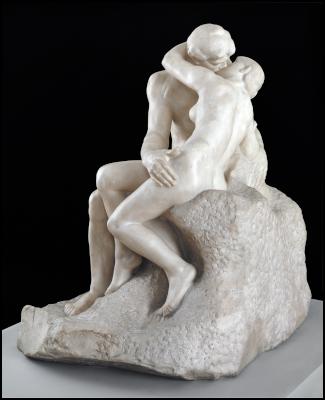International masterpieces to reveal the naked truth
International masterpieces to reveal the naked truth at Auckland Art Gallery Toi o Tāmaki in 2017

Auguste Rodin: The Kiss
The body – in all its complexity – will be
explored in The Body Laid Bare: Masterpieces from
Tate, Auckland Art Gallery’s major exhibition for
2017, which opens on Saturday 18 March.
Beautiful, sensual and at times provocative, more than 100 artworks from the Tate, London, will tell the story of the nude and trace artists’ captivation with the human body over the last two centuries.
From history paintings of the 1800s to the body politics of contemporary art, The Body Laid Bare brings together masterpieces by renowned European artists including JMW Turner, Auguste Rodin, Pierre Bonnard, Pablo Picasso, Henri Matisse, Louise Bourgeois, Cindy Sherman, Sarah Lucas and many more.
At the heart of the show is Auguste Rodin’s marble sculpture, The Kiss, which – although celebrated world wide – is travelling outside Europe for the very first time. Other well-known works include Picasso’s Nude woman in a red chair (1932) and Bonnard’s The bath (1925).
Auckland Art Gallery Director Rhana Devenport says the human form has been and continues to be a point of fascination for artists.
‘The body – at once universal and unique – has been a source of artistic inspiration and stimulation throughout history. It has been used to communicate ideals of beauty and grace, to push boundaries and to challenge,’ she says.
‘While a powerful tool for the artist, the human form also offers a striking experience for the viewer. Captivating, familiar and unfamiliar, it prompts conversation and debate for some and, sometimes, discomfort for others.’
‘As New Zealand’s largest and most-inspiring visual arts experience, it is essential Auckland Art Gallery facilitates these conversations,’ she says.
Devenport says she is thrilled to be partnering with Tate, London, for this exhibition.
‘Tate is one of the foremost art museums internationally and it is a privilege to be the only New Zealand institution exhibiting such stunning artworks from their vast collection.’
Director of Tate, Sir Nicholas Serota, says the nude has been a topic of spirituality, grace and controversy throughout the history of art.
‘The Body Laid Bare: Masterpieces from Tate presents this emotional genre through powerful artworks of enduring relevance. It is particularly pleasing to see this exhibition presented in partnership with Auckland Art Gallery – and to the public in New Zealand,’ he says.
Devenport says that the life model is at the heart of artistic practice.
‘The Body Laid Bare traces the history of art and the development of major European artistic movements, but it is also a study of what it means to be human.’
Journeying through time, The Body Laid Bare begins with the classical, biblical and literary nudes of 19th-century painting, from depictions of the bath of Psyche to Christianity’s Adam and Eve. Moving through to the 20th-century, the exhibition explores how artists depicted the female form in intimate and everyday scenes. It reveals how images of nude models came to signal both artistic creativity and sexual tension, and shows the way early 20th-century artists explored radical new approaches to depicting the body through multiple viewpoints and simple, geometric shapes.
As the exhibition unfolds towards the present day, it examines sexual politics, and the way female artists upended power relations. It looks at the way artists began using their own bodies in art, how they expanded the range of bodies represented, increasingly expressing the vulnerable, mortal shape of humans.
(ends)


 NZEI Te Riu Roa: School Lunches - Give Schools Option To Use In-School And Community Providers Immediately, Union Says
NZEI Te Riu Roa: School Lunches - Give Schools Option To Use In-School And Community Providers Immediately, Union Says University of Auckland: Billion-dollar Business Lessons From Kiwi Entrepreneur
University of Auckland: Billion-dollar Business Lessons From Kiwi Entrepreneur NZ Veterinary Association: NZVA Celebrates Welcome Additional Support From Veterinary Nurses
NZ Veterinary Association: NZVA Celebrates Welcome Additional Support From Veterinary Nurses Michael King Writers Centre: New Zealand’s National Writer-Residency Organisation Announces Its 2025 International Residency With Australia
Michael King Writers Centre: New Zealand’s National Writer-Residency Organisation Announces Its 2025 International Residency With Australia Endometriosis NZ: Desogestrel Funding A Major Boost For Endometriosis Patients
Endometriosis NZ: Desogestrel Funding A Major Boost For Endometriosis Patients Auckland Festival of Photography: Project Launched To Capture And Diversify Auckland’s Visual Heritage
Auckland Festival of Photography: Project Launched To Capture And Diversify Auckland’s Visual Heritage